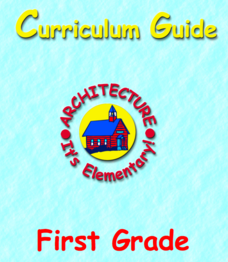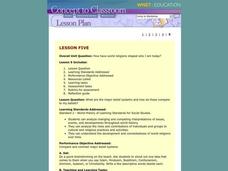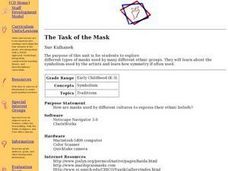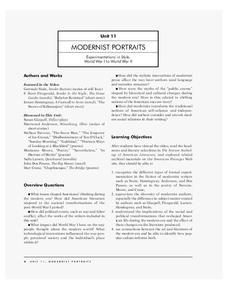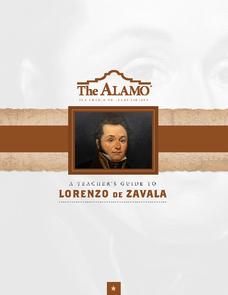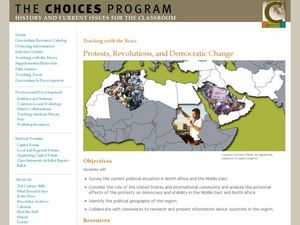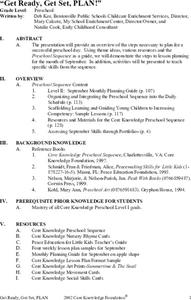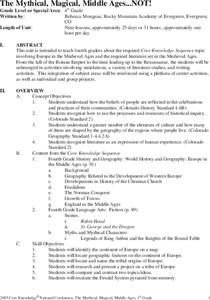American Institute of Architects
Architecture: It's Elementary!—First Grade
Build an interest and appreciation for architecture in your young learners with this fun 10-lesson art unit. Engaging children in using their five senses, the class first observes the environment around them, paying...
iCivics
Governing Communities
The government at the local level acts as perhaps one of the most relevant government systems to many in their communities. Learners discover how the local government shapes their lives and the similarities and differences between the...
Partnership for Educating Colorado Students
Mayan Mathematics and Architecture
Take young scholars on a trip through history with this unit on the mathematics and architecture of the Mayan civilization. Starting with a introduction to their base twenty number system and the symbols they used, this eight-lesson unit...
Curated OER
Teaching the Novel in Context
Students write a context paper. In this teaching the novel in context lesson, students view a primary sources to recreate the cultural and historical context of the novel. Students make the connection between the literary...
Curated OER
The Teachings of Confucius
Sixth graders study who Confucius was and when he lived. They explain the basic ideas of Confucius, his plan for a good government, and his ideas on harmony in society. They explain the impact of Confucian teachings on contemporary...
Curated OER
3-D Topographic Maps
Students create a 3-D topographic map. In this map building lesson plan, students use cardboard to create a topographic map of the Catskills mountain region.
Curated OER
How have world religions shaped who I am today?
Students analyze changing and competing interpretations of issues, events, and developments throughout world history. They brainstorm ideas about what they think about Islam, Hinduism, Buddhism, Confucianism, Animism, Judaism, or...
Curated OER
The Hunter Using Children's Literature to Teach the Geography of Africa
Students are able to answer basic questions about the region and the use of natural resources, sketch a mental map of the story's setting, and find their way through the thematic maze/map.
Curated OER
Customized Topographic Maps and Models
Young scholars explore the information depicted on topographic maps. They construct a 3-D topographic map of a local area. They go on a field trip to the depicted area and compare the 'real world' with their models.
Curated OER
The Task of the Mask
Students discover historical value and use of different African masks through research and literature. Students also relate different customs and traditions of ethnic groups to the masks.
Annenberg Foundation
Modernist Portraits
How did literature reflect people's attitudes in post-World War I America? A lesson explores the topic using a variety of activities. Individuals watch and respond to a video; read author biographies and engage in discussion; write...
Curated OER
Valuable Lessons
Students explore how immigration, citizenship, due process of law, and the freedoms of speech and assembly have shaped American values throughout American history
The Alamo
A Teacher’s Guide to Lorenzo De Zavala
Who was Lorenzo de Zavala to the Texas Revolution, and how did he change the Alamo? Find out using an educational resource that asks learners to fill out graphic organizers and respond to short-answer questions to further solidify their...
Curated OER
How is our place connected to other places?
Second graders conduct a survey, they record their data with the help of maps. They use an aerial photo or Ordnance Survey map, 2nd graders pinpoint specific places and add them to a legend using the drawing tools. Students use...
Curated OER
Artifact Analysis Worksheet
In this artifact analysis worksheet, students decipher what type of artifact they have based on a complete list of criteria. Students then answer multiple questions based on their discoveries.
Curated OER
Our Country's Environment
In these environment worksheets, students complete several multiple choice questions that teach them about the Earth's landforms and water.
Curated OER
A Sign of Their Times
Young scholars identify the social climate that created the terms Degenerative Art and Fascist Aesthetic. They also identify how and why certain artists' artwork fell into these categories. Students recognize and discuss the...
EduGAINs
Governmental Apology for the Aboriginal Experience—Canadian and World Studies
What constitutes an effective apology? After considering a series of scenarios, class members develop criteria for an effective apology and then use these indicators to evaluate Canada's Prime Minister Harper's apology to former...
Curated OER
Protests, Revolutions, and Democratic Change
High schoolers examine uprisings in the Middle East and North Africa. In this global issues lesson, students view video clips, conduct group research, and present their findings in group presentations about the unrest in Algeria,...
Curated OER
Culture - Unit on Religion and Globalization
Students examine the impact of religious beliefs on perspectives about globalization. They watch and discuss a video, identify the role of the International Monetary Fund, read and discuss articles, and write an essay.
Curated OER
Get Ready, Get Set, PLAN
Students complete the theme activities in the unit for the month of September. In this planning lesson, students complete various themed activities for the month of September. Students complete movement activities, autonomy and social...
Curated OER
Introduction to World Religions
Sixth graders compare and contrast the world religions. In this cultural practices lesson, 6th graders locate places in the world where Buddhism, Christianity, Judaism, Hinduism, and Islam are practiced.
Curated OER
Cartoons for the Classroom: Don't Get It? You're Not Alone
In this historical events worksheet, students analyze a political cartoon from the 1700's and one from the 1900's . Students respond to 2 short answer questions.
Curated OER
The Mythical, Magical, Middle Ages...NOT!
Students complete worksheets and roleplay feudal simulations as they are immersed in the daily life of the Middle Ages. They study geography of Europe and the origins of European tribes. They outline and write a biographical essay and...
